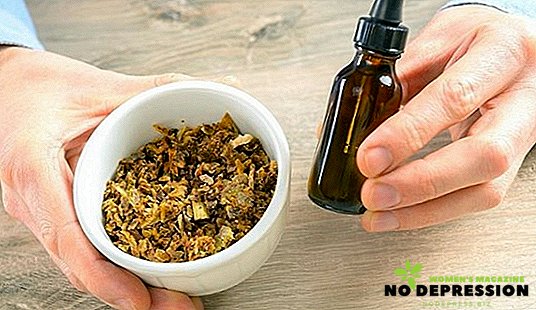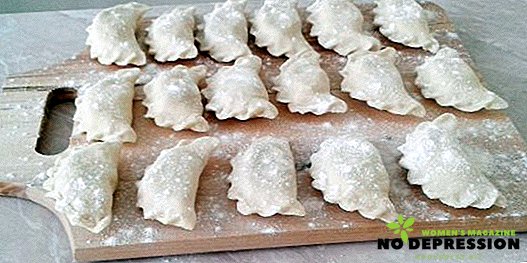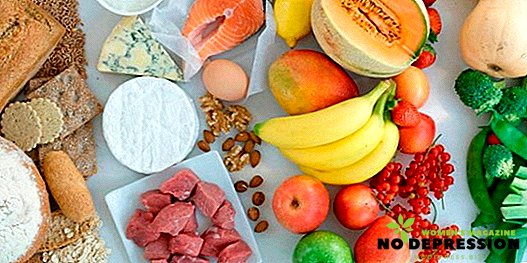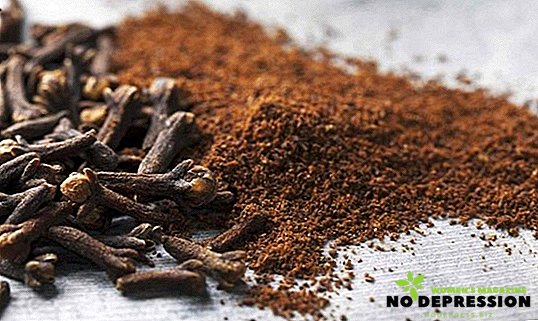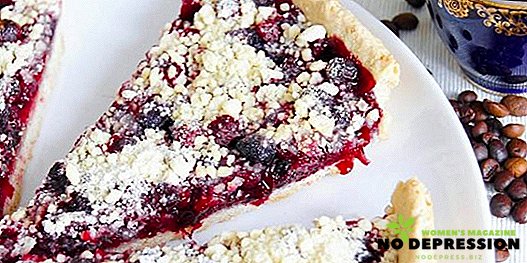A variety of greenhouse crops is growing every year. No one will be surprised by cutting tomatoes and cucumbers in a snowy season, but the watermelon on the table during the cold season is really amazing.
In addition, the greenhouse berry has excellent taste characteristics, which are not inferior to summer watermelons. Those who wish to secure a sweet winter and grow watermelons in a greenhouse should remember that greenhouse cultivation has a number of differences from planting in open ground.
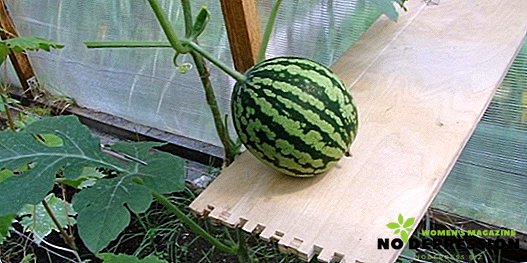
How to choose and prepare a greenhouse
There are no special requirements regarding the frame and covering material of the greenhouse. Equally successfully used polycarbonate buildings and ordinary film, which cover the frame. And yet, when choosing a greenhouse it is necessary to take into account the main recommendations of experts:
- The height of the greenhouse can not be less than 2 meters;
- Lanes, which are tied watermelons need to be raised very high;
- Provide complete exclusion of cold air penetration;
- The building should not have cracks, cracks and tear cover;
- The exclusion of the development of fungal infections should be ensured;
- In the warm spring, it is mandatory to disinfect the ground and the frame part using a solution of blue vitriol.
For the cultivation of melon crops it is necessary to equip a separate greenhouse. Neighborhood with other cultures is unacceptable. A separate greenhouse will allow you to select the ideal conditions for the rapid ripening of the berries.
It is very important to ensure the temperature in the range of 30-32 degrees and a slight degree of humidity.
Gourds are able to successfully endure drought, but you can ruin the crop if the moisture index exceeds 60%. Usually such conditions provoke the development of a fungal disease.
Greenhouse preparation includes the following activities:
- Closer to March 20, we remove snow from the greenhouse;
- We examine the building from the inside and outside. Found faults must be corrected without fail. The presence of even the smallest gap is unacceptable. It will let through the cold in winter, which will undoubtedly lead to the death of the sprouts;
- We cover the material with a film (polycarbonate);
- We fertilize the soil, which will increase the degree of fertility in the future;
- Before cultivating melon crops, it is necessary to sow the land with dill, daikon and parsley;
- Seeds are planted only in carefully heated soil;
- Fold in the greenhouse materials that protect the seedlings. Rags, heavy paper and special film are great.
Choosing the right variety and seed
The variety of breeding species is confusing. Experts advise to buy for growing under greenhouse conditions varieties of watermelon, the mass of which does not exceed 3 kg. As a rule, these varieties quickly ripen. The best types of sweet berries include:
- Cinderella;
- Light;
- Siberian;
- Ultra early variety.
From the moment of appearance of the first sprouts to harvest, 80 days pass. Small berries gladden with their sweetness and juiciness. It is not recommended to use for planting seeds with a longer growing season.

When choosing seeds, you should take into account the advice of experts:
- Purchase of seeds must be made exclusively in large retail outlets;
- Pay attention to the place of the work of planting material. It is advisable to select seeds from your own region that successfully tolerate the native climate;
- We make a choice in favor of the varieties of rapid ripening, which will be the guarantor of obtaining ripe fruits;
- In no case can not acquire the seeds of watermelons, which reach 10-15 kg. Cultivation of such crops is possible exclusively in the southern regions. In greenhouse conditions, the harvest does not wait;
- Pay attention to the shelf life of planting material. We take only fresh seeds. They germinate much faster than those that were in the package for over a year.
How to grow seedlings
From the date of planting the seeds to their planting in the ground takes about 30 days. Every day means a lot to the plant. It is necessary to carry out all the work on care in time in order to move healthy sprouts to the greenhouse soon.
The basic rules for planting material should include:
- Compliance with the optimal timing. Ideally for these purposes, the end of April - the beginning of May;
- We provide each sprout a separate area. It is advisable to use peat pots for planting seeds. When transplanted into the ground, the root system of the plants is not damaged;
- The diameter of the peat pots should not exceed 10 cm. Wider containers can be re-moistened during watering and the planting material will disappear. If desired, cut plastic bottles can be used for planting;
- Before sowing the seeds, soak them in warm water (24-25 degrees). This will allow a much larger percentage of planting material to climb;
- Before planting, we knead a bucket of soil, which should include the ground (1 part), humus (3 parts) and fertilizer (with phosphorus, potassium and nitrogen) - spoon. Instead of fertilizers, potassium sulfate can be added to the soil;
- Proper seed placement. When planting seeds laid on its side. This will allow the leaves to easily break through the shell. We sow material on couple of cm;
- The indicator of air temperature during germination should be in the range of 24-25 degrees. As soon as the first shoots appear, reduce the temperature to 21 degrees;
- Before the appearance of the first growth, it is necessary to cover the sown area with a film;
- The seedling is tied up a couple of weeks after transplantation into the greenhouse.

Seedlings must be properly maintained, namely:
- Provide complete freedom. The pots must not touch each other;
- We feed plants twice before planting in the greenhouse. Mineral fertilizers are used for this procedure;
- Provide long-term coverage (about 14 hours per day), which will prevent the plants from loosening and stretching.
Planting watermelon seedlings in a polycarbonate greenhouse
After reaching the necessary height of sprouts, it is necessary to think about their transplantation into the greenhouse. Saplings are planted in areas along the sides.
Planting plants must provide them with free space. The distance between the berries should be approximately 90-110 cm.
The soil is pre-fertilized with humus or potassium salt. After transplanting about 10-14 days sprouts do not require care. The most important thing is to provide the recommended temperature conditions. If the temperature in the building has exceeded 28 degrees, then it is necessary to ventilate the greenhouse.
How to grow watermelons in the greenhouse: competent care
At an early stage of development of melon culture, it will be necessary to give them due attention, namely:
- Strictly observe the temperature regime;
- Irrigate in small portions as needed. Water should be slightly warm;
- As soon as the lash has reached 30 cm, it is necessary to carry out fertilizer every 7 days using ammonium nitrate;
- To ensure the sweetness of the berries, it is necessary to apply wood ash;
- It is best to tie the trellis to the trellis, the length of which is 35-40 cm;
- The ovary of the fruit on the melon crop is formed on the main stem. Any additional shoots can be safely removed;
- Once the male and female shoots have reached the size of a pea, you should follow the pollination. If there are no insects, you can perform this work manually. For these purposes, in male flowers, petals are cut off and are attached by anthers of stamens to female pistils;
- When the developing fruits reach 4-5 cm, it is necessary to leave only 3-4 pieces, and remove the rest in order not to provoke the exhaustion of the plants;
- Scourge to be pinned after 5 leaflets from the ovary;
- When hanging berries it is necessary to place them in the grid so that they do not break off from the severity. If the decision is made to leave the fruits for growth on the ground, it is necessary to put a wall under each berry. This will prevent rotting of the fruit.

Diseases and pests
Growing seedlings must carefully care about their health. It is required to carry out disinfection of inventory and premises in time. It is extremely important to control the degree of humidity. Also required to comply with all the rules of crop rotation.
Gourd culture is prone to fungal and bacterial infections. Improper care may cause wet rot, anthracnose and bacterial spotting.
Fruits can be damaged by pests, namely:
- melon gummy;
- spider mite.
It is necessary to systematically inspect all the seedlings. When finding the affected element, you must delete it urgently. If necessary, the plants can be treated with special means.
How to determine the ripeness of watermelon
Most sugar fruits can be obtained in August and September. Picking up a watermelon, of course, I want to choose the most ripe berry. Indicator of ripeness are:
- spot on the side;
- ass gourd culture;
- the appearance of the crust;
- sound resonance;
- tail condition.
A slight yellowness in the side of the fetus appears due to contact with the ground. The presence of this spot will guarantee that the ripe fruit has been picked from the bed.
Crop storage rules
In order for the picked berries to remain as long as possible, it is necessary to dry them thoroughly. When harvesting you should carefully collect the watermelons, tearing them from the whip with a piece of tail. In no case can not scratch the crust and cause any other damage.
This will lead to a rapid deterioration of the product. It is possible to place a harvest for storage in open boxes and boxes. The surface of the bottom of the box is covered with hay. Fruits are placed in one layer. The temperature of the storage room should be between 12-13 degrees.
Dilution of watermelons in greenhouses does not require much time and physical costs if you use the right agricultural practices and a good greenhouse. With all the efforts and observing the recommendations of experts, you can grow truly tasty and healthy fruits.

Peculiarities of growing watermelons in the Moscow Region, the Urals and Siberia
Each region has its own characteristics and secrets of cultivation of melon culture. To get a quality crop of watermelons in the Moscow region, in the Urals and in Siberia, you need to use the advice of experts, namely:
- planting sprouts in the greenhouse to carry out a little later than usual (after 50-60 days);
- it is necessary to carry out warming of beds;
- provide longer lighting (16 hours per day);
- we sow exclusively cold-resistant varieties whose fruiting period is among the earliest.
You have a rich harvest!
Some more secrets of growing watermelons in the greenhouse can be found in the next video.




